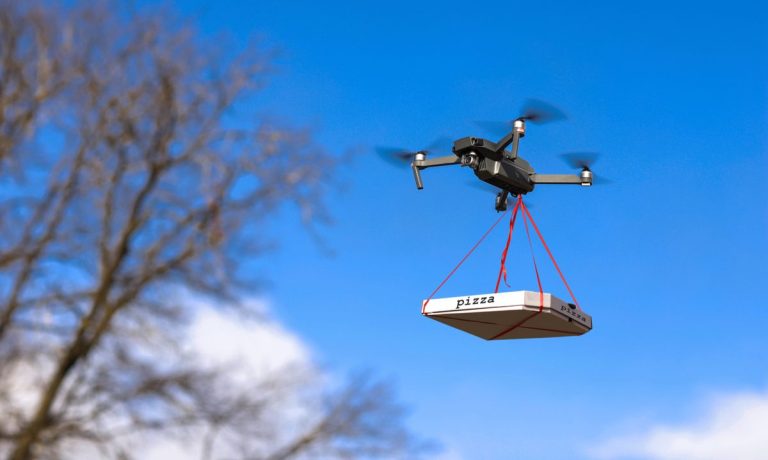Demand for food delivery remains high even as ongoing inflation and labor challenges put additional pressures on the channel that was never economically sound to begin with.
See also: Delivery Aggregator Losses Point to Economic Value of Platform Model
Against this backdrop, businesses have been seeking out more labor-efficient ways to get food orders to consumers’ doors, and consumers have been looking for delivery options with lower fees. As such, companies promising robotic delivery, be it via sidewalk robot or via drone, have the opportunity to capture demand from restaurants, third-party aggregators and consumers alike.
Yariv Bash, CEO of drone delivery provider Flytrex, spoke with PYMNTS about how the space has evolved since his last conversation with PYMNTS in the summer of 2021.
Read more: Flytrex CEO Says ‘There’s No Better Way’ Than Drone Food Delivery
“When we spoke in July, we had one station, maybe two, but [they could do] only very short-range deliveries because of the regulatory constraints,” Bash said. “Now that we have approval from the [Federal Aviation Administration (FAA)] for a one nautical mile radius, we’re currently servicing a potential of close to 10,000 households, so it’s really starting to scale… The number of households we’ve been servicing has increased by [a factor of] five or 10.”
Advertisement: Scroll to Continue
In December, the company received the FAA go-ahead for these mile-long deliveries in North Carolina. The company’s merchant partners have included mega-retailer Walmart and restaurant company Brinker International, parent company of Chili’s Grill & Bar, among other brands.
The Price Is Right
The cost of delivery is a significant deterrent for many consumers, according to data from PYMNTS’ Restaurant Friction Index, created collaboration with Paytronix. The study, which drew from a survey of a census-balanced panel of over 2,100 United States adults, found that the main reason most consumers who do not use aggregators steer clear is that they are unwilling to pay the delivery and/or service fees.
See more: New Data Show Digital Loyalty Programs Are Key Differentiator for Top-Performing Restaurants
“Drone delivery is … faster and free for the customer, so … it’s now part of [consumers’] lives,” Bash said.
In fact, a significant share of consumers who do not currently order delivery would do so if fees were lower, suggested data from PYMNTS’ report “Digital Divide: Aggregators and High-Value Restaurant Customers,” created in collaboration with Paytronix, which surveyed a census-balanced panel of more than 2,100 U.S. adults in the fall about their food purchases.
Get the report: Aggregators and High-Value Restaurant Customers
The study found that three in 10 restaurant customers who had not used aggregators the previous 15 months would consider using one in the future if the aggregator offered lower delivery and service fees. Additionally, this factor ranked above all others as the one that would influence the greatest share of non-users.
Dipping a Toe in the Water
Given the novelty of drone delivery, Bash noted, consumers tend to be cautious when it comes to their first orders, putting the model to the test with difficult-to-deliver items.
“Usually, the first time people [order, they] try to see how good we are,” he said. “They … order eggs or coffee or ice cream — those kinds of items — just to see how they arrive.”
After these first orders, he recounted, orders become more routine, with consumers ordering whatever item they would from any other delivery service.
Certainly, on-demand delivery has become an expectation for most consumers, one that restaurants have rushed to meet. The Restaurant Friction Index found that nearly all top-performing restaurants offer delivery. Specifically, 97% of top performers offered the channel, compared to just two-thirds of bottom performers.
Additionally, the study found that the restaurants least likely to offer the channel are independent restaurants with table service; only 76% of these restaurants provide the option, compared to 95+% of independent quick-service restaurants (QSRs), table-service chains, and quick-service chains.
By Land or by Sky
Bash said he sees use cases for different kinds of automated food delivery robots.
“Each delivery method has its … plus and minuses, so for instance, sidewalk robots can deliver a … much heavier payload, so if you’re doing your week’s worth of groceries, drone deliveries will not be the answer,” he said.
Conversely, he noted that drones can move more quickly, making them a better choice for orders that the consumer wants or needs more quickly. Looking ahead, he predicted that new FAA approvals will enable delivery drones to be deployed on a larger scale.
Additionally, in the next several years, he predicted that drones will become the norm for restaurant delivery in suburban areas.
“In five years,” he said, “I think that, unless you need something very heavy or you need a human being for a very specific reason, there will be no point in delivering meals in any other way than drones … in the suburbs.”




